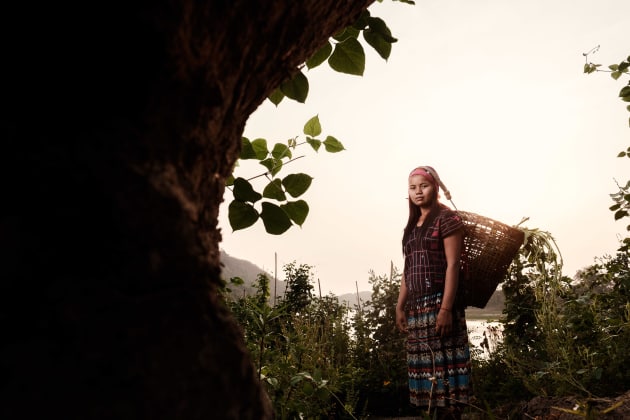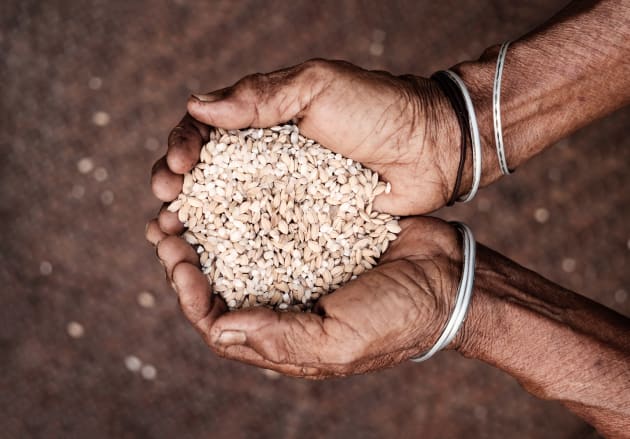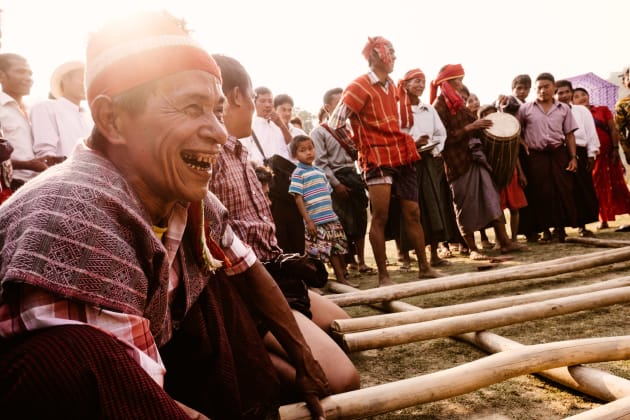Photo tip of the week: Shoot a personal project
I recently completed an 18-month personal photographic project documenting the culture of the Lai Tu Chin people of Western Myanmar. Over the years I have done several themed projects, including a fine-art project focused on drinking tea in the strangest of places and another on the artisans of Korea.
However, I had never done a long-term project documenting a culture and its people until now. Eventually, it became a 120-page hardcover book, a 100-page softcover book, a short video, and a series of video portraits. One of the things I decided early on was that I wanted the project to be crowd funded, and I wanted it to raise money to help the Lai Tu Chin people. The Lai Tu live in remote regions of Myanmar, accessible only by river, and are very susceptible to military actions and harsh weather. My goal with this project was to help raise money through the sale of my photo books for clean drinking water and education.

1. The Big Idea
The hardest part of any project is coming up with a good idea. A good test of your idea is to ask yourself if you will still be interested in working on it in six months or a year's time.The idea is the most important part of any project. If the idea is strong enough it will be its own motivation to get things done.

2. You need a plan
Once your idea has taken shape sit down and start planning. What do you need to do, when do you need to do it, what organisation can you do to make sure everything runs smoothly. The more thoroughly you plan, the more you will be able to devote your energies to the photography when the time comes. For my project, some of the more unusual planning tasks involved organising guides, a boat driver for the duration of the shoot, and accommodation for our team within the villages. After, I could focus purely on the project.

3. Which Gear?
This is the easy part of any project. Which gear are you going to need? Will it hold up in the conditions you will face? How will you keep your data safe and your batteries charged? If you are going to be around the water, do you need to protect your gear with a waterproof case? On this trip, it boiled down to ensuring that all my lenses and bodies could be cleaned when needed, making sure I could back up data without the need for a computer, and having solar power to keep my batteries charged. To keep things clean, an air blower, an army of microfibre cloths, and some cleaning fluid and lens tissues for when things got really dirty were thrown into the bag.

4. Working with people
Once you're in the field, all your senses are heightened and there are no second chances. No matter how we were feeling, we needed to be smiling and energetic. Our own behaviour would show others around us that we were here to have a good time and collaborate on something beautiful. Working with non-models means that you need to be extra sensitive to how a person is feeling. As I didn't speak their languages, I was relying very heavily on non-verbal cues. If I noticed someone feeling a little uncomfortable, I would put the camera down for a moment and ask a question to relax them.
Staying humble the whole time was also important. I would make jokes and act the fool to keep the mood light hearted. Without fail, I would draw a crowd as my equipment came out of the bags. Having my guides explain what this was for, and then showing the results was a good way to make sure people understood what I was doing. This relaxed those who tensed at the sight of all the gear being set up. Ultimately, getting my subjects onto my side before I started making photographs was the goal, and it helped with the success of the project.

5. Perseverance
As a long-term project goes on, it's likely you will feel tested at times. Every step along the way, you are going to face setbacks.
The key to getting a project done is not to lose focus. Most days in the villages the filmmaker and I faced what seemed at the time like insurmountable setbacks. We had communication issues, our boat broke down, we got sick, etc. The key is not to let it get you down. We focused on the things that were going right. This was only half of it, though. When we got home, there was almost 500GB of data to manage. For me, the biggest task was choosing images and text and working with the designer to layout the book. But it was never really difficult because I believed in the idea and I was committed to seeing it through to the end. I only hope you enjoy your own passion project as much!



